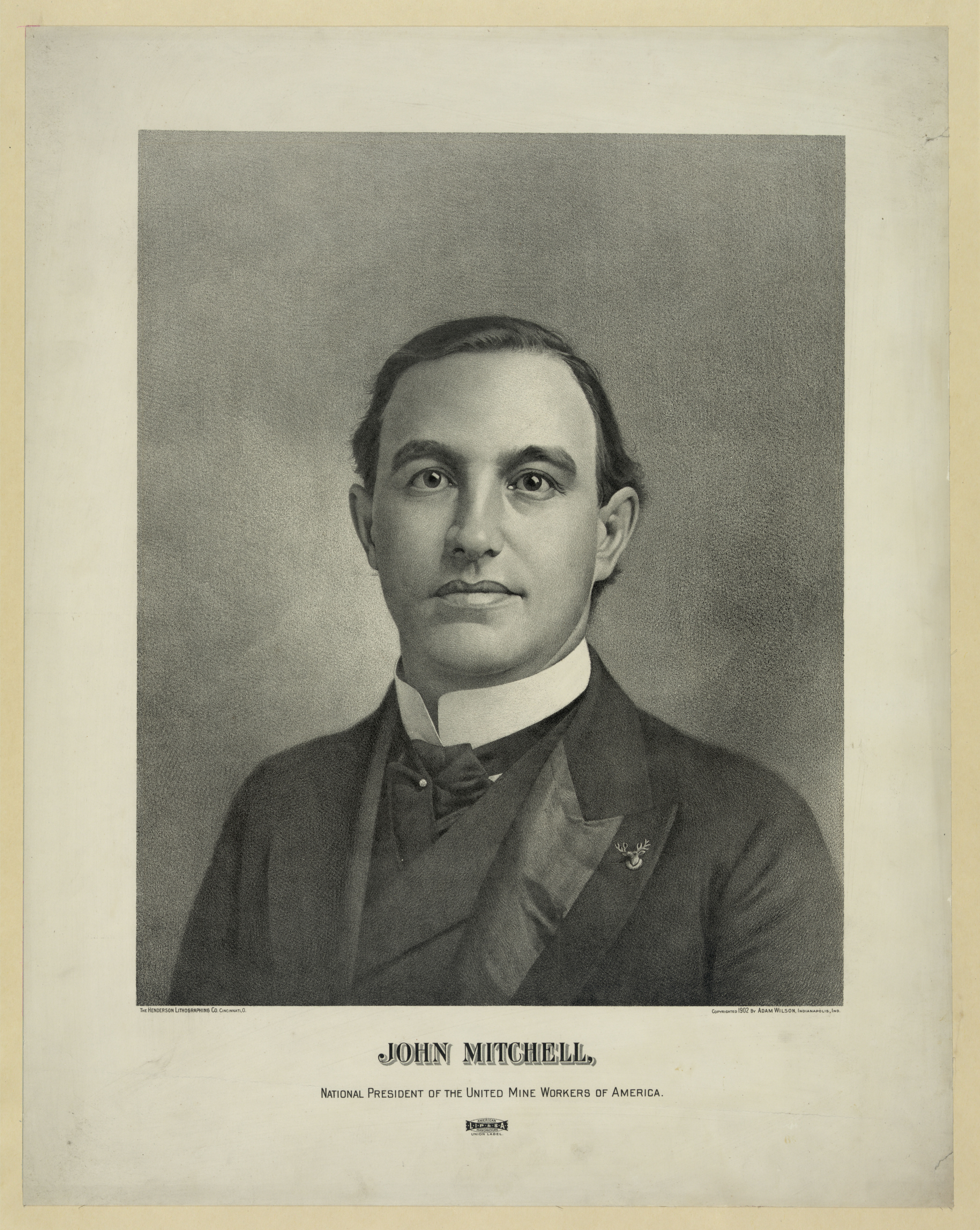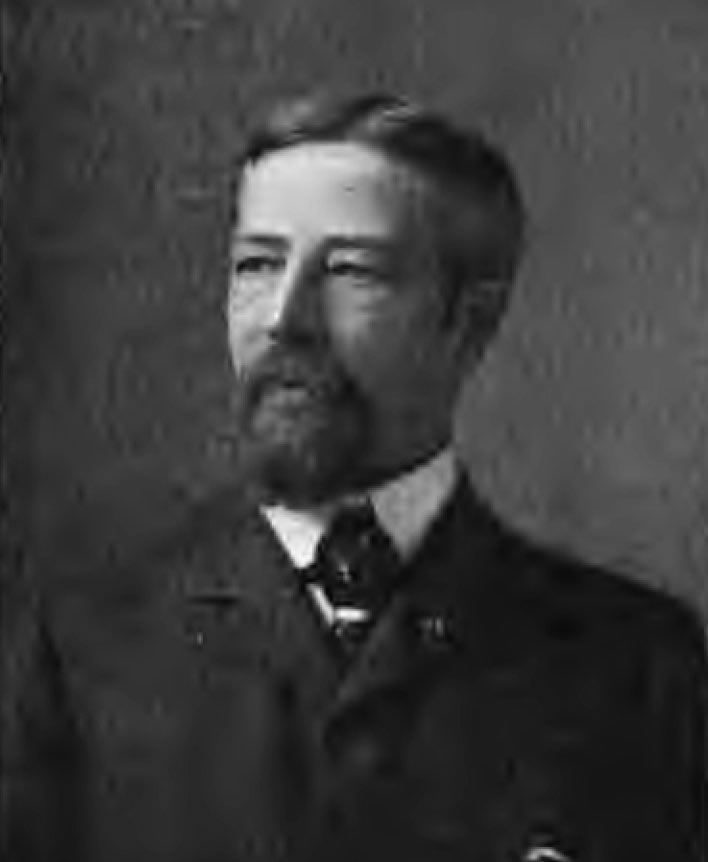
The winter of 1902 was coming fast. The Anthracite Coal Strike in northeastern Pennsylvania had been going on for over four months with no signs of ending. President Theodore Roosevelt feared “untold misery…with the certainty of riots which might develop into social war.” He felt something must be done. But the federal government had no legal right to intervene in a dispute between capital and labor. With the price of coal skyrocketing to 20 dollars per ton— the equivalent of $12.93 per gallon of gas today—Roosevelt found himself in an impossible situation.
But how did the “Great Strike” come about? Contention in Pennsylvania’s anthracite region—located in the counties of Schuylkill, Carbon, Luzerne, Lackawanna and Northumberland—was prevalent virtually since mining began in the area. One of the most important episodes between capital and labor happened from 1868 to 1876. The Worker’s Benevolent Association (WBA) was trying to win an eight-hour workday and better working conditions for its members. The coal operators schemed to destroy the union by hiring Pinkerton’s National Detective Agency to frame some of the miners as anarchistic “Molly Maguires” (a name taken from Irish vigilantes who fought against British oppression). When Pinkerton’s Agency found no evidence to convict the miners with, the operators decided to use brute force. Richard Boyer tells in his book Labor’s Untold Story how the “operator’s unleashed a reign of terror, hiring and arming a band of vigilantes…who joined the corporation-owned Coal and Iron Police in waylaying, ambushing and killing militant miners.” Public sentiment was not with the miners, who were decried as “a wild beast and needs to be shot down.” Within six months the WBA was obliterated and 19 miners were hanged.
Over the next 15 years anthracite miners picked up the remnants of their broken union to join the Knights of Labor with the National Federation of Miners in 1890. The union, the United Mine Workers of America (UMWA), tested its strength against bituminous coal operators in the Midwest and western Pennsylvania for better working conditions. They were successful. By 1900 the newly elected union president, John Mitchell, attempted to repeat his success against northeastern Pennsylvania’s anthracite coal operators. The operators were as hard as the coal they mined. Despite several attempts to discuss the miners’ grievances, the operators, headed by George F. Baer, President of the Philadelphia and Reading Railroad, would hear none of it. Mitchell called his men to strike.
1900 was an election year. Republican presidential incumbent William McKinley was running with the campaign slogan “A Full Dinner Pail,” lauding his successful first term and the promise of prosperity in the second. His campaign manager, Senator Marcus Hanna of Ohio, feared that a labor strike would lose McKinley voters. Hanna spoke with Wall Street financier J.P. Morgan, who owned the railroads operated by Baer and the others, to bring about the end of the strike. Morgan had recently bought land in the anthracite region and owned debt on the railroads; he could not afford to lose money on a strike. Combined with pressure from the Republican Party, Baer and the other operators relented and accepted a 10% increase in wages. Mitchell called off the strike after six weeks.
Almost everyone was happy: Mitchell had won his first contest for the UMWA; Hanna’s successful navigation of Republican interests kept McKinley in the presidency; Morgan could continue to consolidate his finances without fear of losing money on a strike. The strike ended well for all parties—everyone except for the coal operators. Robert Wiebe, a political and social history professor at Northwestern University, wrote in an essay on the anthracite strike: “The settlement of 1900 left the operators a legacy of hate… [T]hey bitterly resented a politically dictated defeat.” Baer and the others would not soon forget what they considered a forced concession. If the time ever came that another strike should contest against them, the operators would stand their ground—no matter what.
That time came in 1902. Mitchell decided that the miners needed better conditions and appealed to the operators to work out the problems. He was refused. In March Mitchell met with anthracite laborers to establish their demands to the operators: first and foremost recognition of the UMWA as a union, which had been deprived of them in the strike two years earlier; a 20% increase in wages; a reduction from ten to eight hours in a workday; and a system of weighing coal and paying for it by the ton instead of paying by the cartload. The demands from the Shamokin Conference were sent to the operators. Again Mitchell was ignored.
Mitchell turned to his old friend Senator Hanna. Hanna was then the President of the National Civic Federation (NCF), an organization founded in 1900 to settle disputes between capital and labor. Mitchell was also a member of the NCF; not only that, but Mitchell grew up as a bituminous miner in Illinois, and Hanna, as a bituminous coal operator, found a strong friend in Mitchell. As he had done in 1900, Hanna contrived to make peace with the operators in 1902 and called the representatives of both parties to meet with him in New York. Mitchell presented the miners’ requests. Professor Wiebe wrote in his article that the operators “were determined to avoid another humiliation at the hands of politicians” and no agreement was made. 30 days later Hanna and Mitchell tried again with the same result.
May 12, 1902, Mitchell called out 147,000 workers from the anthracite mines of Pennsylvania. The “Great Strike” had begun.
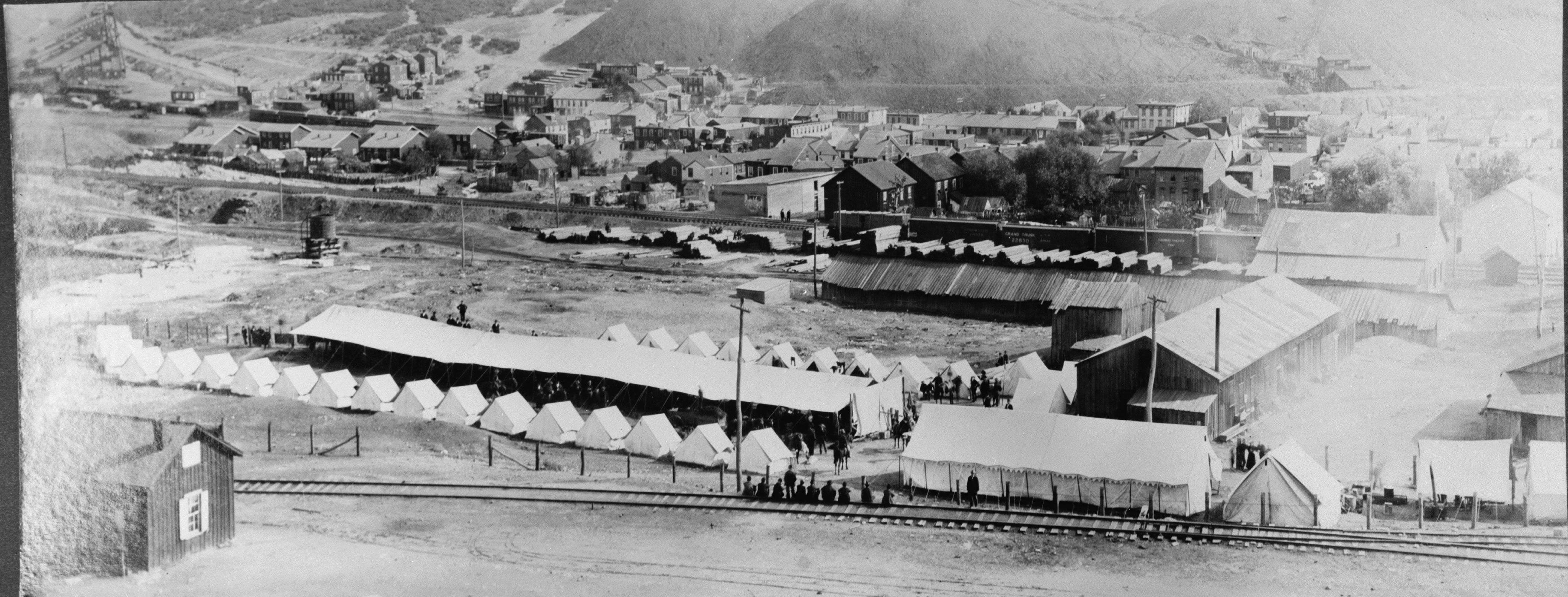
Baer and the other operators were not about to be pushed around. They enlisted 5000 Coal and Iron Police to guard the mines, claiming that if men were protected from the strikers they would return to work. The Police were “hired guns” legitimized by Pennsylvania’s state legislature; for one dollar each, coal and steel operators could have the governor sign commissions and the Police were endowed with all the powers of the law to enforce the companies’ interests. As Jeremiah Shalloo, professor of sociology at the University of Pennsylvania, pointed out in his book Private Police: With Special Reference to Pennsylvania, there was “no consideration…nor was there any attempt on the part of any responsible authority to determine the character or fitness of the persons for whom commissions were sought…There was no investigation, no regulation, no supervision, no responsibility undertaken by the State.” With the law working for them, the operators were confident Mitchell would back down.
He did not. In fact, he put more pressure on the operators. Mitchell told them that if the pumpmen, firemen and engineers, who kept the mines from flooding with water, did not receive an eight-hour workday within two weeks, they would withdraw from the mines on June 2. An article from the Philadelphia Inquirer warned that “their withdrawal from the collieries would flood the mines to an extent that would take months to remedy.” A second article in the Inquirer alleged that “One of [the unionists] expressed confidence that the operators would accede to the demands rather than have their property destroyed.” Just as the operators had underestimated Mitchell’s determination, so too did Mitchell underestimate the operators’ resolve. Baer refused to talk to Mitchell. The pumpmen, firemen and engineers left.
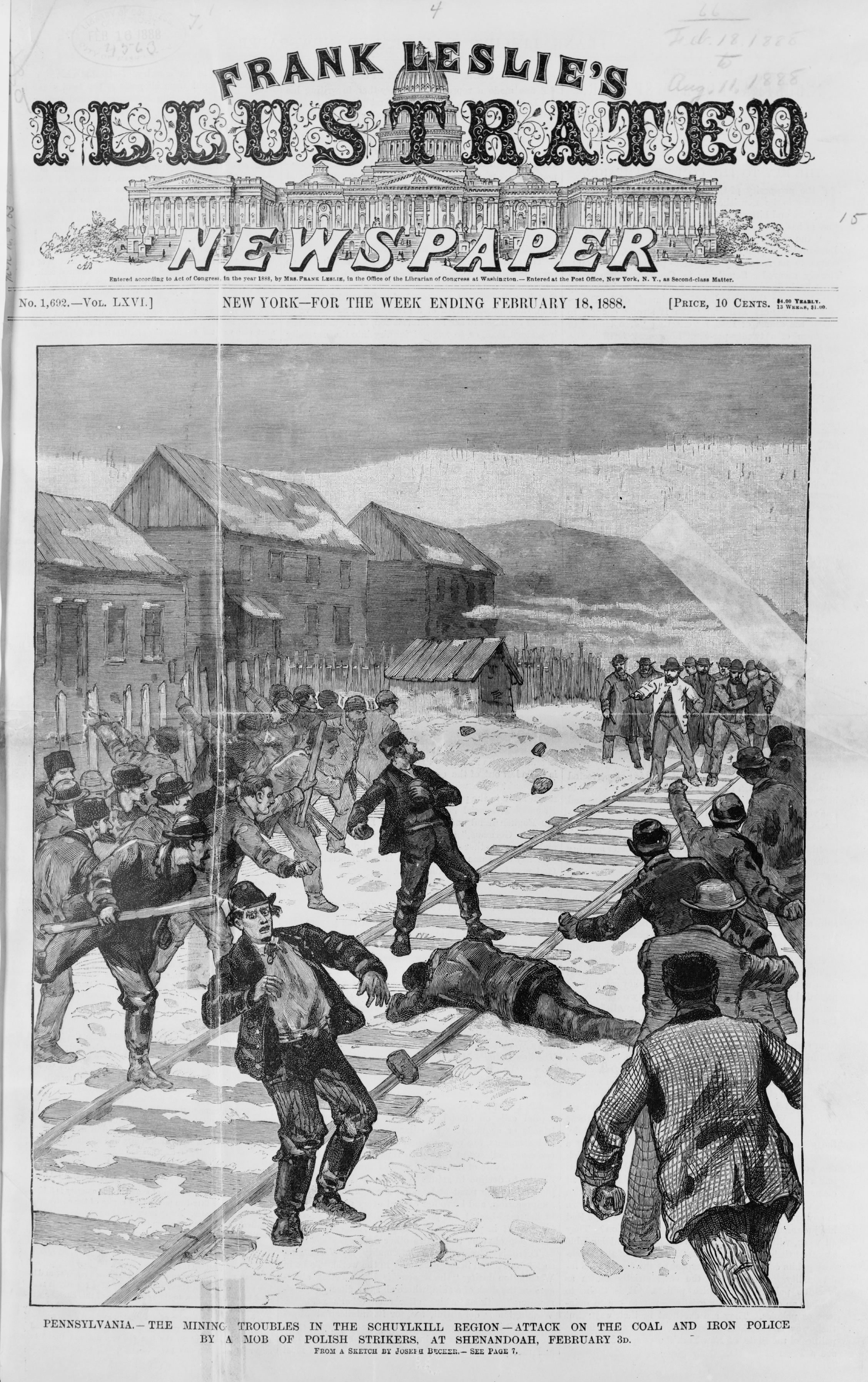
Confrontations escalated on both sides. A fence surrounding a mine colliery was put to fire; the Coal and Iron Police stationed there became fidgety. When 13 year old Charles McCann was walking along the outside of the fence, the Police fired at him, fearing he would ignite the fence again. McCann was hit and rushed to the hospital. Four Police were arrested.
Strikers telephoned homes at midnight to terrorize the “scabs,” a derogatory term for men who continued to work during strikes. The strikers threatened women that if they did not convince their husbands to refrain from going to work, their homes would be blown up with dynamite.
A man was killed on July 2 by the Coal and Iron Police, who claimed the man tried to climb over a fence when he was ordered to stop. 3000 National Guard troops were called out under the command of Brigadier-General Gobin.
300 strikers held up a train conveying workers and Police to the mines. When the train tried to continue on its way, the strikers hurled rocks and fired their guns on it. The men inside dove to the ground as shards of glass fell on them. Gobin gave the order to fire at will if attacked and the entire force of the National Guard, 10,000 strong, was called into Pennsylvania.
The dire situation was not lost on President Theodore Roosevelt. He asked Attorney General Philander Knox, himself a Pennsylvanian, if there was anything he could do. Knox told the president not to be concerned about it—Roosevelt had no legal right to get involved. This was not the answer Roosevelt wanted to hear.
Meena Bose said of the president, “Roosevelt demonstrated from an early age his determination to overcome challenges through sheer willpower” in The New York Times on the Presidency. He overcame his childhood asthma and nearsightedness to become the champion light-weight boxer at Harvard. In the mid 1880s, he bought a ranch in North Dakota in a section of the state known as the Badlands where he earned a reputation as being courageous; it was also where he became intimately acquainted with the laboring class ranchers and farmers which made him more sympathetic to the UMWA’s plight later in his career. Roosevelt became President of New York’s Board of Police Commissioners where he personally enforced the law. When Roosevelt eventually became president in 1901, he was prepared to meet the threat the strike of 1902 posed to the American people. Envisioning himself as “the steward of the people,” Roosevelt intervened in the strike by personally enforcing his will to resolve the matter, whether the law allowed him to or not.
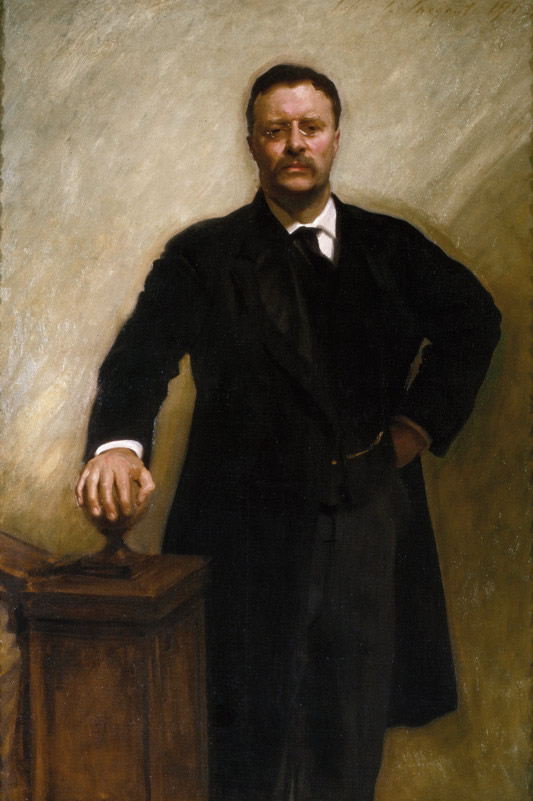
Roosevelt sent telegrams to the laborers and the operators to hold a meeting with him on October 3 in Washington. At the meeting held at No. 22 Lafayette Square, Baer spoke for the gathered coal operators; John Markle, head of the firm G.B. Markle and Company, for the independent operators; and Mitchell for the laborers. President Roosevelt, Commissioner of Labor Wright, Attorney General Knox, and Roosevelt’s secretary, George Cortelyou, gathered to hear the arguments. Roosevelt spoke first:
As long as there seemed to be a reasonable hope that these matters could be adjusted between the parties it did not seem proper to me to intervene in any way…but the urgency and the terrible nature of the catastrophe impending over a large portion of our people in the shape of a Winter fuel famine impel me…to believe that my duty requires me to use whatever influence I personally can to bring to an end [the] situation…I appeal to your patriotism, to the spirit that sinks personal considerations, and makes individual sacrifices for the greater good.
Mitchell was quick to reply: “Conscious of the responsibility upon us…we propose that the issues culminating in this strike shall be referred to you and a tribunal of your own selection, and agree to accept your award upon all or any of the questions involved.”
Baer seethed that “The government is a contemptible failure if it can only protect…lives and property…by compromising with the violators of law and the instigators of violence and crime.” Fellow mine operator Markle demanded: “I now ask you [Roosevelt] to perform the duties vested in you as president of the United States, to at once squelch the anarchistic condition of affairs existing in the anthracite coal regions by the strong arm of the military at your command.” The meeting failed to resolve the strike.
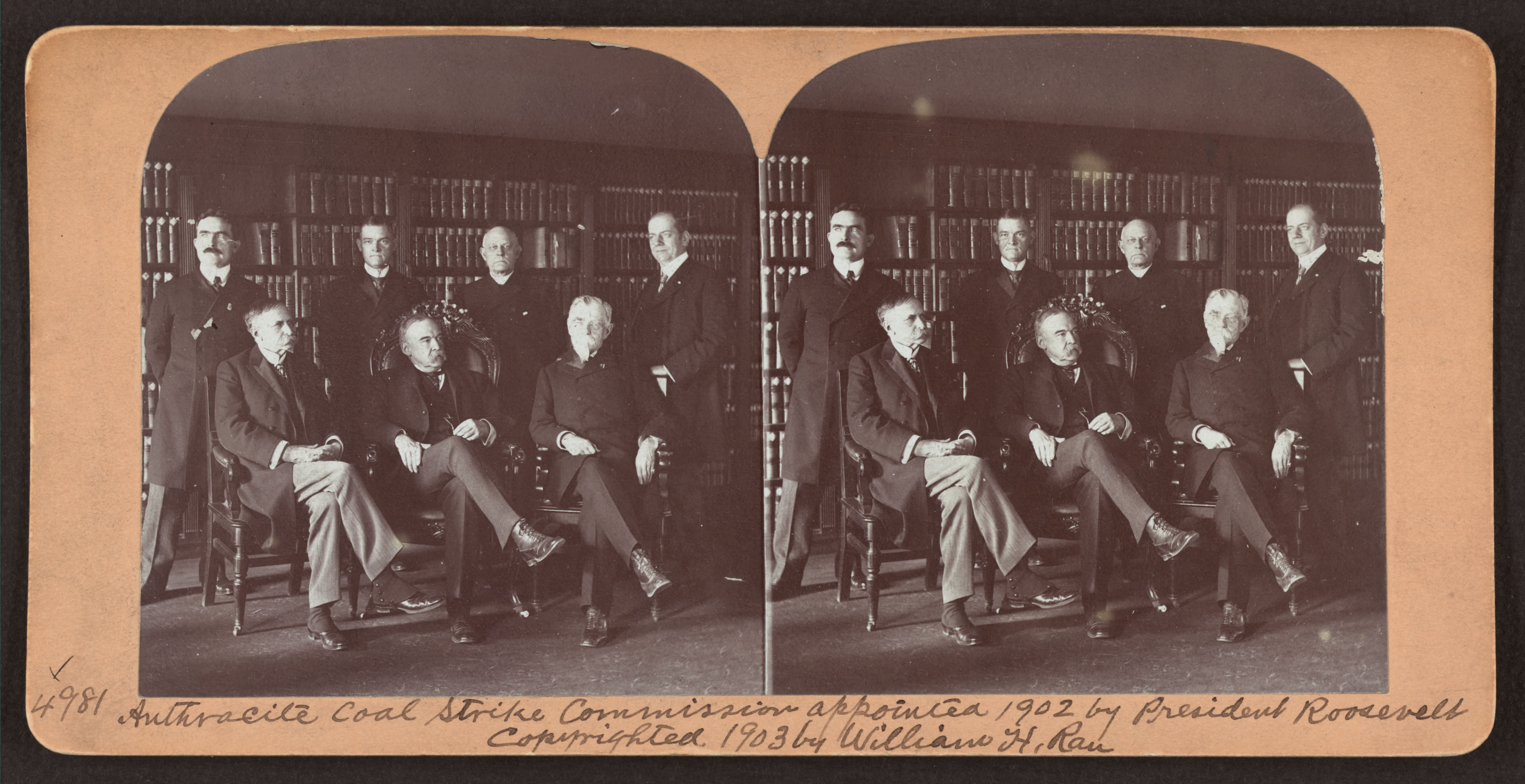
Despite the initial disappointment, Roosevelt was not a man to be told “no.” Within a week, he sent Secretary of War Elihu Root to talk with J.P. Morgan. The two devised a contract calling for the president to assign a committee of arbitration to settle the strike; Morgan made Baer and the other operators sign the memorandum. Even though the operators had signed for arbitration, they demanded that the president set up the committee composed of five men—a military engineer, a mining engineer, a judge, an expert in the coal business, and an “eminent sociologist.” The list just so happened to lack anyone to be in favor of the laborers.
Mitchell, alarmed at the prospect of facing a stacked committee, asked the president to add a labor man and a Catholic prelate because many of the miners were Catholic. Roosevelt complied. He appointed Edgar Clark, an attorney and union official, as the “eminent sociologist.” The operators accepted the appointment. Roosevelt, amused, commented “[The operators] would not object to any latitude I chose under the headings that they had given. I instantly said that I should appoint my labor man as the ‘eminent sociologist.’” Roosevelt formed the arbitration committee on October 16 which consisted of Clark, Bishop John Spalding, Judge George Gray (who was elected chairman), Edward Parker, Thomas Watkins, and Brigadier-General John Wilson. Commissioner of Labor Carroll Wright had been assigned as recorder and the committee voted him on as a full member. The arbitration of the Great Strike was underway.
With the establishment of the Anthracite Coal Strike Commission, Mitchell called off the strike on October 23. It had lasted for 163 days. There were seven recorded deaths and numerous stories of terror and crime committed on both sides, but the “Great Strike” earned a reputation as being one of the most organized strikes to date. The Commission travelled to the anthracite mines for 10 days to personally inspect the conditions under which the miners worked. Then on November 14, the Commission began its hearings at the Lackawanna County Courthouse.

The hearings lasted until March of the next year. During the process, 558 witnesses were heard, ranging from unionists to beleaguered workers attacked during the strike, to wives of workers and breaker-boys younger than nine years of age. Finally, on March 22, 1903, the Commission announced its verdict: the miners won a 10% increase in wages and a nine-hour workday. Coal was still paid by the cart load, and the UMWA was still unrecognized as a union, Mitchell’s main impetus for calling the strike. Thus, the Great Strike of 1902 ended.
Public opinion was varied and conflicted throughout the duration of the strike. Mayor Abram Hewitt of New York said in October, “There can be no arbitration. Suppose a man went up to the White House and said: ‘Mr. President, I want your office’; would President Roosevelt submit the matter to arbitration?” An article in the New York Times ridiculed Mitchell’s efforts: “The strike itself, so far as the miners are concerned, is evidently a practical failure…The present condition is simply unbearable.” Reverend Dr. Parkhurst of New York had a different opinion: “[Mitchell’s] willingness to leave the question with a disinterested committee…was very fair. Contrasted with the attitude of the operators it tends to throw sympathy to the side of the miners…Mr. Baer’s remarks…referred to Mr. Mitchell as heading the movement of intimidation and violence. At a time like this…bitterness is out of place.” The Chairman of the United States Steel Corporation, Elbert Gary, cared little who was in the right: “It is of minor importance whether the operators or miners are right in their respective contentions…[Both] parties to the controversy should be willing to submit for decision their disputes to any fair tribunal.”
Despite the strike’s mixed reviews, there was some hope that the strike pushed the efforts of labor unionization forward. Samuel Gompers, who founded the American Federation of Labor, said that he viewed the strike as “the most important single incident in the labor movement in the United States.” Selig Perlman, an economist and labor historian at the University of Wisconsin-Madison, stated that for perhaps the first time in history “a labor organization tied up for months a strategic industry…without being condemned as a revolutionary menace.”
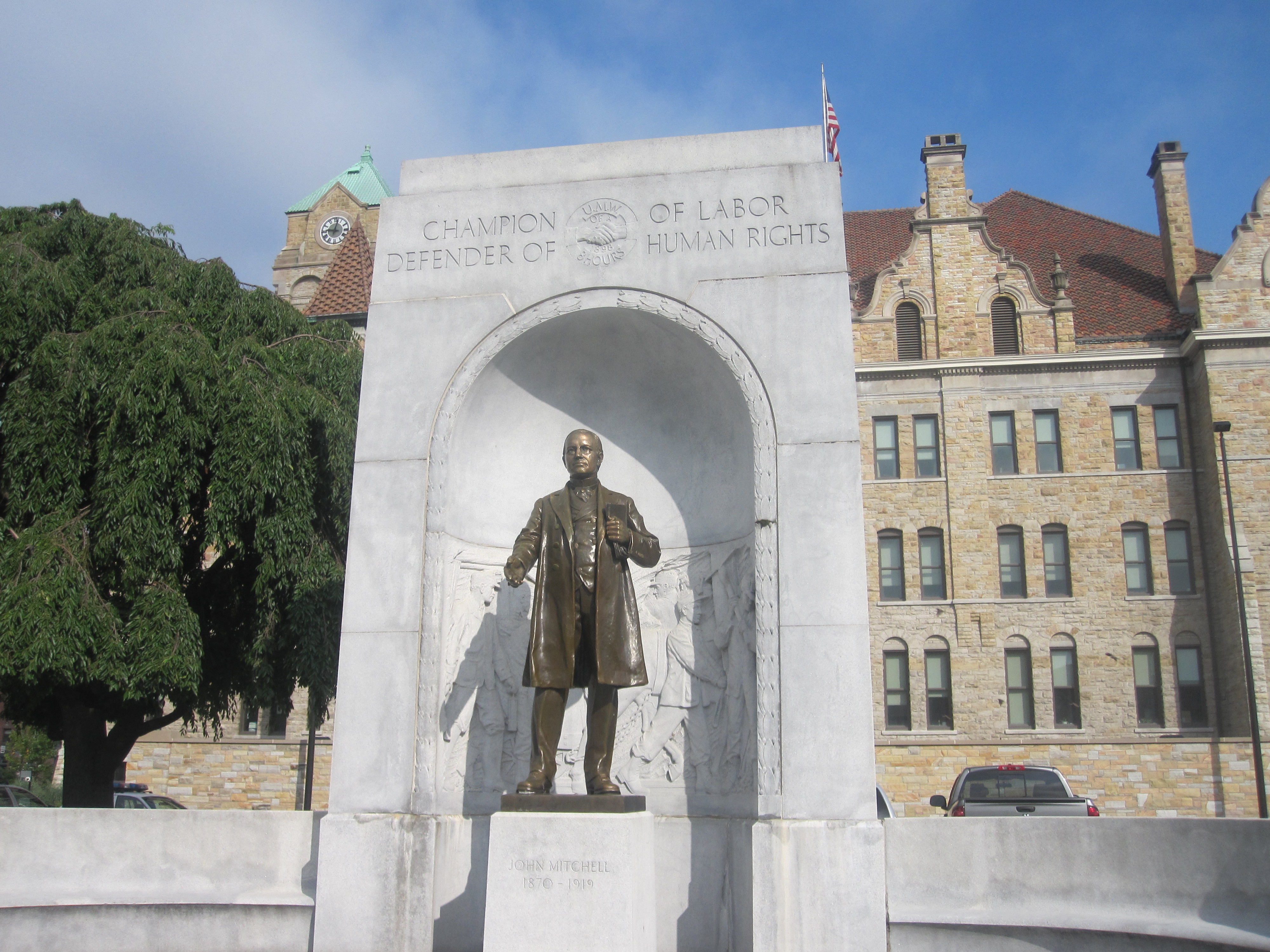
The “Great Strike” left a legacy that continues to be important even today. In 1924, a memorial was dedicated to John Mitchell in Scranton, Pennsylvania. The marble and bronze statue was dedicated to the union leader, located at the Lackawanna County Courthouse where the Anthracite Coal Strike Commission began its hearings in November of 1902. To this day people still gather around the statue to celebrate “John Mitchell Day” on October 29, in remembrance of Mitchell’s success in the anthracite strike of 1900.
Another important ramification of the anthracite strike was the establishment of state police forces. During the time of the strike, government regulation was in the hands of county deputies and sheriffs. Dating back to the formation of the Coal and Iron Police in 1865, the letter of the law under the Police was mounted against the laborers in a legal strike-breaking force. Even when law enforcing agencies were involved, like Pinkerton’s National Detective Agency, they hired the Coal and Iron Police themselves to crush labor strikes.
That all changed in 1903, when Samuel Pennypacker took the office of Governor of Pennsylvania. When Pennypacker was addressed by the Deputy Secretary of the Commonwealth to sign commissions to hire Coal and Iron Policemen, the governor thrust the letters from his desk and exclaimed, “Take them away! I will never put the police powers of the State in the hands of the nominees of one of the parties to a controversy. We must have an independent constabulary.”
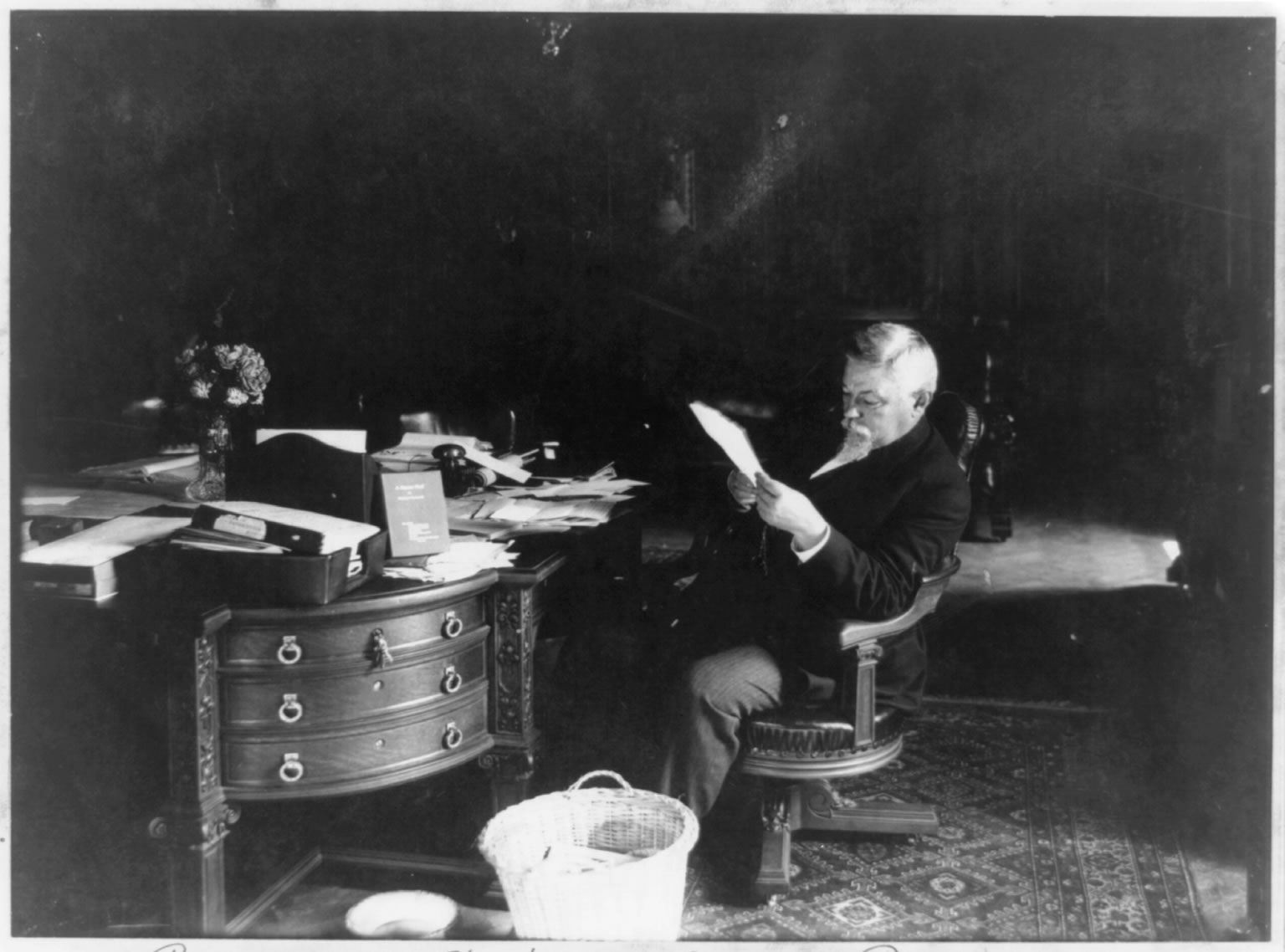
Although Pennypacker’s idea for state police was formulated in 1903, union leaders feared that the new police force would be called out against them to break strikes, just as the Coal and Iron Police and Pinkerton’s Agency had. They lobbied hard against the formulation of a state police force. However, the General Assembly approved of the bill and Pennypacker signed it into law on May 2, 1905, creating the Pennsylvania State Police; the Department was the first organization of uniformed police in the United States.
Finally was the strike’s ability to propel the ideology of Progressivism, the greatest good for the greatest amount of people, forward in politics and society headed by President Theodore Roosevelt. Beginning at the turn of the 20th century, advocates of Progressivism sought to limit the power and influence of wealthy elites (like J.P. Morgan) and fought for better living conditions for the masses, especially laborers in factories and mines. The anthracite strike galvanized Roosevelt to set the precedent of involving the federal government in contests of capital and labor; this later led to the establishment of initiatives, referendums and recalls in the government and the eight-hour workday, a fact most people today take for granted. Socially, Progressivism led to the formation of the NAACP by W.E.B. DuBois in 1905 and the Pure Food and Drug Act in 1906, which forbade selling impure foods and required a list of ingredients on foods and drugs. Finally it helped women gain universal suffrage in 1920 through the 19th Amendment. Thanks to the anthracite strike of 1902, Roosevelt was able to employ the means of the federal government in improving the standard of living for all Americans.
Spring had come again to the anthracite coal region of Pennsylvania in March, 1903. One year ago almost to the day Mitchell had gathered with laborers in Shamokin to demand better treatment from Baer and the other operators. Although the strike failed to accomplish every goal it set out to achieve, labor unions were no longer considered detrimental but useful, perhaps even necessary. The federal government became proactive as an arbitrator of capital and labor disputes. State police forces were organized, first in Pennsylvania, and then across America. These affects are still profound and important to the idea of politics and society in the United States today; and all are consequences stemming from the anthracite coal strike of 1902.
Sources:
- “Biography of Theodore Roosevelt.” Theodore Roosevelt: 26th President of the United States of America. Chapultepec, Inc., 1999-2006. 5 Feb. 2010. <http://www.theodore-roosevelt.com/trbioqf.html>.
- “Bloodshed and Riot at Wilkesbarre Mine.” New York Times 6 Jun. 1902: 1.
- Bose, Meena. The New York Times on the Presidency, 1853-2008. Washington: CQ Press, 2009.
- Boyer, Richard O. and Herbert M. Morais. Labor’s Untold Story. New York: Cameron Associates, 1955.
- Carson, Hampton L. An Address upon the Life and Services of Samuel Whitaker Pennypacker. New York: New York Public Library, 8 Jan. 1917. <http://www.archive.org/stream/addressuponlifes00cars#page/n9/mode/2up>.
- “Coal Crisis Pulpit Topic.” New York Times 13 Oct. 1902: 2.
- “Coal Situation the Topic of General Discussion.” New York Times 5 Oct. 1902: 2.
- “Conditions Unbearable.” New York Times 31 Aug. 1902.
- “First Loss of Life in Anthracite Strike.” New York Times 2 Jul. 1902: 1.
- Grossman, Jonathan. “The Coal Strike of 1902 – Turning Point in U.S. Policy.” Monthly Labor Review, Oct. 1975. Print. <http://www.dol.gov/oasam/programs/history/coalstrike.htm>.
- “History Pennsylvania State Police.” Pennsylvania State Police: Historical, Educational and Memorial Center, 1999-2010. 12 Feb. 2010. <http://www.psp-hemc.org/history/psp.html>.
- “Lackawanna County Courthouse.” Living Places. The Gombach Group, 1997-2010. 9 Feb. 2010. <http://www.livingplaces.com/PA/Lackawanna_County/Scranton_City/Lackawann....
- “More Troops Ordered Out.” New York Times 30 Sep. 1902: 3.
- “Official Statement of the Conference.” New York Times 4 Oct. 1902: 1.
- “Pumpmen Will be called out unless Concessions are made.” Philadelphia Inquirer. 22 May 1902: 1.
- “Report to the President of the Anthracite Coal Strike of May-October, 1902.” Washington: Government Printing Office, 1903. <http://www.archive.org/stream/reporttopreside01goog#page/n7/mode/1up>.
- Reynolds, Robert L. “The Coal Kings Come to Judgment.” American Heritage Magazine, 2008. 31 Jan. 2010. <http://www.americanheritage.com/content/coal-kings-come-judgment>.
- Roy, Andrew. History of the Coal Miners of the United States. Columbus: J.L. Trauger Printing Company, 1907.
- Shalloo, Jeremiah P. Private Police: with Special Reference to Pennsylvania. Philadelphia,1933.
- “Soft Coal Men May be Asked to Strike.” Philadelphia Inquirer. 17 May 1902: 1.
- “The Miner’s Union and Disorder.” New York Times 8 Oct. 1902: 8.
- “Theodore Roosevelt: Presidential Accomplishments.” National Park Service, 8 Dec. 2009. 5 Feb. 2010. <http://www.nps.gov/history/logcabin/html/tr3.html>.
- “The Progress of the World.” Ehistory: Multimedia Histories Section. OSU Department of History, 2010. 7 Feb. 2010. <http://ehistory.osu.edu/osu/mmh/gildedage/1902anthracitestrike/content/p...
- Wiebe, Robert H. “The Anthracite Strike of 1902: A Record of Confusion.” The Mississippi Valley Historical Review, Vol. 48, No. 2, Sep. 1961. pp. 229-251.

